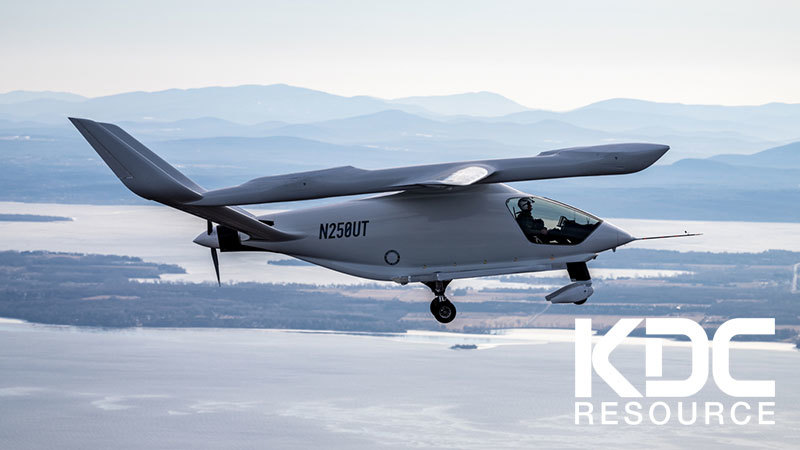

The US military is known as a powerful driving force behind changes to the defence sector. After all, a budget of $1.9 trillion in a year gives plenty of room for trying new things.
One of its latest trial projects is Agility Prime, which focuses on integrating eVTOL technology into its military services. But what does this project promise for the military and will it have any impact on the civilian market?
Agility Prime is a project managed by AFWERX, which is a branch of the US Air Force. The purpose of AFWERX is to foster innovation from entrepreneurs specifically for the military. It was first announced in 2018 and has since launched numerous projects.
The Agility Prime project launched in April 2020. Its goal is to integrate eVTOL vehicles (referred to in the launch speech as flying cars) into the US Air Force. Although no specific examples were announced at the time, possible avenues of integration include transporting injured troops, delivering goods to warzones, and carrying out safety checks at military bases. In short, the goals remain the same as the civilian sector, just with a military spin.
But one of the project’s most important roles is its ability to fast track airworthiness approval for eVTOL companies. Since its inception, both Joby Aviation and Beta Technologies’ Alia have received certification. After all, if the US military wants something, it will very likely get it as soon as possible.
This, of course, has implications for the civilian marketplace. eVTOL vehicles were originally designed for civilian use and this has not changed. However, military intervention means we will see this technology released commercially much sooner than anticipated. As we discussed in a previous article, airworthiness certification is one of the main barriers to the commercial introduction of eVTOL vehicles.
Whether this is ethical remains to be seen. Current plans do not indicate that eVTOLs will fulfil direct combat purposes, although this might be the case in the future. Utilising civilian technology for military purposes is arguably the reverse of the typical exchange, but this will have positive implications for eVTOL vehicles in a commercial context.
Currently, Agility Prime involves two main eVTOL companies: Joby Aviation and Beta Technologies. The project has three phases that include requests for both passenger and cargo vehicles, so we may see other companies introduced in the future. Each phase specified aircraft must have flown by December 2020 to ensure they were at a suitable stage of development for rollout in 2023. Similarly, the project stated they must achieve airworthiness by December 2021, but both Joby and Beta received certification within the last few months.
Along with these two official partners, Agility Prime has identified a further four potentials: Elroy Air, Lift Aircraft, Moog, and Phenix Solutions. Whether these companies will win a place on the project remains to be seen.
As mentioned, current plans for eVTOL vehicles involve mainly assistance roles, as these best utilise current setups. However, the military plans to maximise role of eVTOLs in agile combat employment, which will influence how it operates away from its main air bases in conflict zones.
Early roles will involve the transportation of people and equipment with greater ease than current methods. For example, eVTOL vehicles offer greater flexibility with landing, particularly in harsh environments, and quicker transportation than land vehicles. Also, the operation and maintenance costs of an electric vehicle have the potential to be much lower than for fuel-based vehicles, providing the infrastructure is in place.
In the future, as eVTOL technology becomes ubiquitous, we will likely see it take on combat roles. After all, the military already uses UAVs in combat and eVTOLs mark the next logical step in flexibility. Due to the fast-paced nature of the Agility Prime project, it is no surprise that we have not seen combat adaptations yet. It appears that the military wants to introduce eVTOLs as soon as possible, and developing them for combat would take a lot more time and money.
Although utilising eVTOLs very near completion is a sound idea, the project is not without challenges. One significant challenge is the issue of transportation. In March 2021, the US Air Force ran a simulation in which it transported a Lift Hex eVTOL. It planned to test whether eVTOLs would fit into military aircraft and if it was possible to transport them safely.
The problem of size is an insignificant one. After all, if planes can transport tanks then there should be little issue transporting an eVTOL aircraft. Depending on the vehicle’s setup, it would likely be transported in pieces and assembled at the other end. Beta’s Alia, for example, would have difficulty fitting in a plane due to its 15-metre wingspan.
Then, we must consider the infrastructure required for eVTOLs. Take-off and landing sites will present little issue for the Air Force, as they have access to military bases. But charging stations may require a bit more thought. Setting up a charging area and producing enough power for several eVTOLs could be challenging in more hostile environments.
Similarly, the current range capabilities of eVTOLs might be a limitation for the military. Beta’s Alia has a current range of 160km on a full charge and the military will likely require more for its agile combat employment strategies. However, one of the main purposes of Agility Prime is to massively accelerate industry growth and so we might see the leaps in battery technology we have long needed.
Although Agility Prime is still a young project, its influence on the eVTOL industry is already obvious. Its two main partners achieving airworthiness certification in a matter of months is a significant advance, particularly because of the challenges this presented to the industry.
How this project plays out over the coming years will be interesting. If it continues at the same rate as the last year’s advances, we will likely see eVTOL technology reaching a state that might have previously taken a decade or more to achieve.